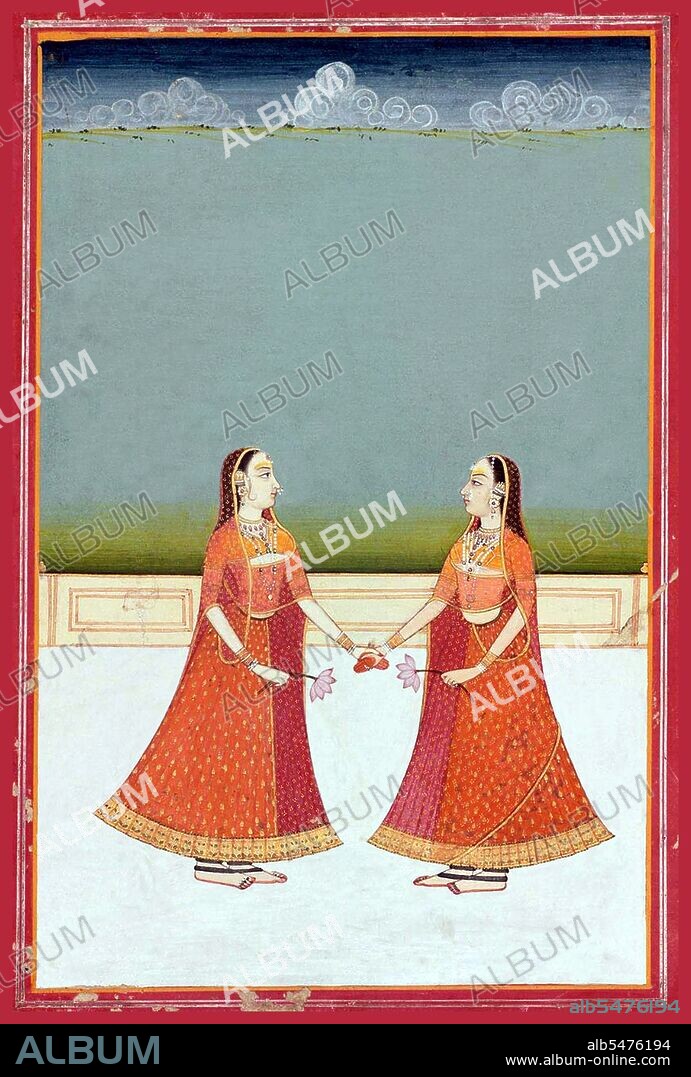alb5476194
India: Two girls standing on a terrace, clasping hands and holding lotus flowers. Rajput miniature painting, early 19th Century

|
Add to another lightbox |
|
Add to another lightbox |



Title:
India: Two girls standing on a terrace, clasping hands and holding lotus flowers. Rajput miniature painting, early 19th Century
Caption:
Rajput painting, also known as Rajasthani Painting, is a style of Indian painting, evolved and flourished during the 18th century in the royal courts of Rajputana, India, flowing from the style of Mughal painting, itself derived from the Persian miniature. Each Rajput kingdom evolved a distinct style, but with certain common features. Rajput paintings depict a number of themes, including events from epics like the Ramayana and the Mahabharata, Krishna’s life, beautiful landscapes, and human life. Miniatures in manuscripts or single sheets to be kept in albums were the preferred medium of Rajput painting, but many paintings were done on the walls of palaces, inner chambers of the forts, havelis, particularly, the havelis of Shekhawati, the forts and palaces built by Shekhawat Rajputs. The colours were extracted from certain minerals, plant sources, conch shells, and were even derived by processing precious stones. Gold and silver were used. The preparation of desired colours was a lengthy process, sometimes taking weeks. Brushes used were very fine.
Credit:
Album / Pictures From History/Universal Images Group
Releases:
Model: No - Property: No
Rights questions?
Rights questions?
Image size:
3400 x 5042 px | 49.0 MB
Print size:
28.8 x 42.7 cm | 11.3 x 16.8 in (300 dpi)
Keywords:
ART • ARTS • ASIA IMAGE • ASIA PICTURES • ASIA • ASIAN IMAGES • ASIAN PICTURES • ASIAN • HISTORIA UNIVERSAL • HISTORIA • HISTORICAL IMAGES • HISTORICAL PICTURES • HISTORICAL • HISTORY IMAGES • HISTORY PICTURES • HISTORY • INDIA • INDIAN • INDIGENOUS PEOPLES OF THE AMERICAS • INDIO • LEGEND • LOTUS FLOWER • LOTUS • PAINT • PAINTING • RAJASTHAN • RAJASTHANI • RAJPUT PAINTING • RAJPUT • WOMAN • WOMEN • WOMENS
 Pinterest
Pinterest Twitter
Twitter Facebook
Facebook Copy link
Copy link Email
Email

